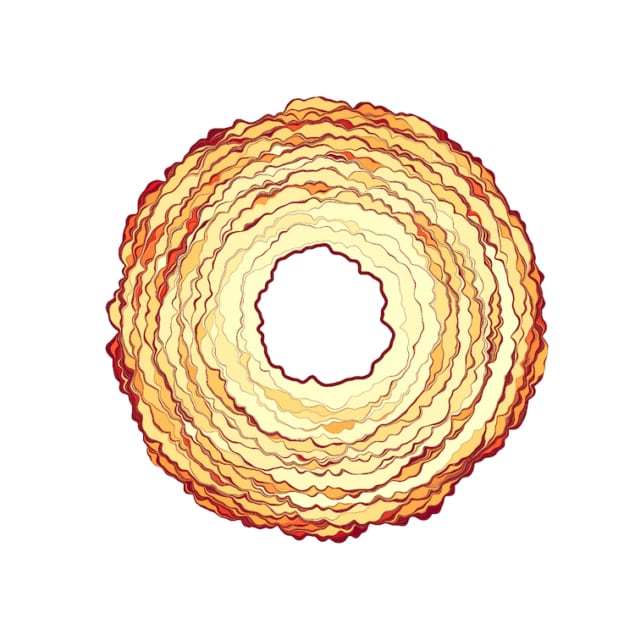
Researchers in Germany and the US have found a new explanation for why soft solids stick to surfaces easily but are difficult to remove. Though experts had long hypothesized that various chemical processes and material-specific properties could play a role in this so-called adhesive hysteresis, a team at the universities of Freiburg, Pittsburgh and Akron has now shown that surface roughness alone is enough to account for it. According to the team, this finding could fundamentally change the way we think about the stickiness of soft materials.
If you’ve ever found it easy to stick an object to something, but almost impossible to get it off it once it’s stuck, you’ve observed adhesive hysteresis in action. “Any soft material will show this hysteresis when making contact,” explains team co-leader Lars Pastewka, a physicist in the department of microsystems engineering at Freiburg. “Scotch tape and sticky notes attach easily but are difficult to detach.”
In 1966, scientists seeking to explain this behaviour developed a rule of thumb called the Dahlquist criterion. This criterion states that if a material is very soft – which Pastewka says is sometimes translated as requiring a Young’s modulus of less than 0.1 MPa – it will “bond” when pushed into contact, and it will maintain this “bond” when released.
In the new study, Pastewka says, “We show that there is no real ‘bond’, but that roughness pins the contact line, yielding a physical explanation for the Dahlquist criterion.”
“Stick-slip” instabilities dissipate energy
To reach this conclusion, Pastewka and colleagues at Freiburg and the livMatS Cluster of Excellence developed models that weave together different strands of engineering and physics. These strands include standard contact and fracture mechanics as well as more abstract research on elastic lines in random media (a topic that lies within the branch of physics dealing with complex systems). The results of these models showed discrete “jumps” known as stick-slip instabilities occurring when the perimeters of elastic bodies contact each other.
These stick-slip instabilities dissipate energy and lead to hysteresis, and Pastewka says that his theory and modelling group at Freiburg hypothesized that they could also play a role in adhesion. “To confirm this, we asked our experimental colleagues at Akron to check their measurements,” he says. “They also saw these jumps.”
Past hypotheses
Scientists had previously suggested that adhesion hysteresis in soft solids might be caused by the dissipation of viscoelastic energy – that is, energy lost to heat when a material deforms during contact. If a material compresses during contact and expands during release, these energy losses would counteract the movement of the contact surface, increasing the adhesive force during separation.
Another explanation centred on a process called contact ageing, which involves the formation of chemical bonds on the contact surface. Under this hypothesis, the longer the contact exists, the greater the adhesion will be.
Though both explanations sound physically plausible, “Our simulations show that the observed hysteresis can be explained without these specific energy dissipation mechanisms,” says Antoine Sanner, a postdoctoral researcher at Freiburg who did the bulk of the study’s theoretical work. “The only source of energy dissipation in our numerical model is the sudden jumping movement of the edge of the contact, which is induced by the roughness of the surface.”
Simplifying the design of adhesives
Because material systems designed to be sticky are often also designed to be viscoelastic, Pastewka says the new work may simplify the design of (reversible) adhesives. Such adhesives might be employed in the locomotion of soft robots, where there is a need to control the load-bearing capacity of the robots’ contacting limbs. Another application might be pick-and-place systems for manufacturing plants, which are increasingly relying on soft robotics.

Bubbles make bandages stickier
The processes described in this study are also affected by interfacial water bridges, and the researchers say they are now exploring the influence of water on adhesion – particularly in the form of capillary adhesions. “Since water is ubiquitous, I believe most adhesive joints are at least to a certain extent mediated by water,” Pastewka says. “We may therefore be able to construct similar (and even simpler) models for capillaries at interfaces.”
All of this is a somewhat surprising outcome for a research project which, according to Pastewka, originally focused on triboelectricity — the phenomenon whereby surfaces in contact with each other become charged. This effect can be exploited for energy harvesting, and it is also related to the processes that charge up clouds during thunderstorms and produce lightning. “Previous research has shown that charge occurs in specific patterns on interfaces, and we thought that thus may be related to how interfaces detach,” Pastewka tells Physics World. “This is why we decided to look into the details of the detachment processes and found the stick-slip instabilities.”
The work is detailed in Science Advances.
- SEO Powered Content & PR Distribution. Get Amplified Today.
- PlatoData.Network Vertical Generative Ai. Empower Yourself. Access Here.
- PlatoAiStream. Web3 Intelligence. Knowledge Amplified. Access Here.
- PlatoESG. Carbon, CleanTech, Energy, Environment, Solar, Waste Management. Access Here.
- PlatoHealth. Biotech and Clinical Trials Intelligence. Access Here.
- Source: https://physicsworld.com/a/sticky-materials-un-stick-themselves-in-jumps/



